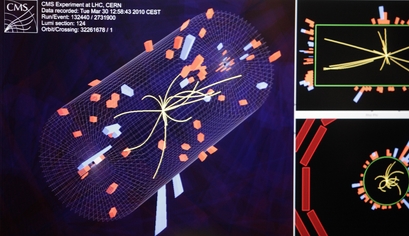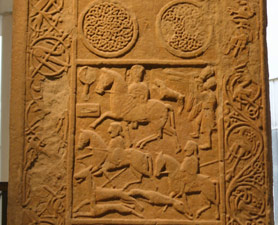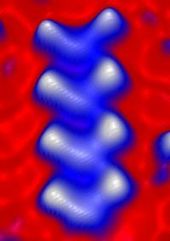
© AP Photo/Anja NiedringhausAn event display shows the activity during a high-energy collision at the CMS control room of the European Organization for Nuclear Research, CERN, at their headquarter outside Geneva, Switzerland, Tuesday, March 30, 2010. The $10 billion Large Hadron Collider directed two proton beams into each other at three times more force than ever before, Tuesday, as part of its ambitious bid to reveal details about theoretical particles and microforces.
The world's largest atom smasher conducted its first experiments at conditions nearing those after the Big Bang, breaking its own record for high-energy collisions with proton beams crashing into each other Tuesday at three times more force than ever before.
In a milestone for the $10 billion Large Hadron Collider's ambitious bid to reveal details about theoretical particles and microforces, scientists at the European Organization for Nuclear Research, or CERN, took high-tech photographs so they could study the disintegrating protons after they collided at a combined energy level of 7 trillion electron volts.
The collisions herald a new era for researchers working on the machine in a 17-mile (27-kilometer) tunnel below the Swiss-French border at Geneva.
"That's it! They've had a collision," said Oliver Buchmueller from Imperial College in London as people closely watched monitors.




